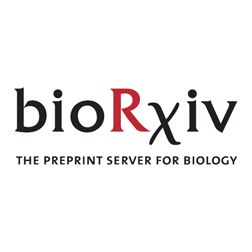


We discuss how tethering the OM to the PG in E. coli preserves integrity — and extend the concept across diderm bacteria.
Curr Opin Microbiol: doi.org/10.1016/j.mi...
#microsky 🔬
We discuss how tethering the OM to the PG in E. coli preserves integrity — and extend the concept across diderm bacteria.
Curr Opin Microbiol: doi.org/10.1016/j.mi...
#microsky 🔬
doi.org/10.1038/s415...
@benjwoodcroft.bsky.social @rhysnewell.bsky.social
🧵1/6

doi.org/10.1038/s415...
@benjwoodcroft.bsky.social @rhysnewell.bsky.social
🧵1/6
#microbiology #protists #eukaryotes
@isme-microbes.bsky.social
academic.oup.com/ismej/articl...

#microbiology #protists #eukaryotes
@isme-microbes.bsky.social
academic.oup.com/ismej/articl...
vConTACT3 delivers a unified, scalable, and transparent framework for genome-based virus taxonomy — helping translate big viral data into systematic classification.
🔗 Read the preprint: doi.org/10.1101/2025...
Improvements details below 👇

vConTACT3 delivers a unified, scalable, and transparent framework for genome-based virus taxonomy — helping translate big viral data into systematic classification.
🔗 Read the preprint: doi.org/10.1101/2025...
Improvements details below 👇


ARC has "postponed" announcement of Centres of Excellence outcomes!
It says "due diligence checks" are still being carried out on some applications.
www.arc.gov.au/news-publica...

ARC has "postponed" announcement of Centres of Excellence outcomes!
It says "due diligence checks" are still being carried out on some applications.
www.arc.gov.au/news-publica...
@official-smbe.bsky.social APSPM meeting. To help you make up your mind, here is a sneak peek. Join for what will be an amazing meeting. biosig.lab.uq.edu.au/strphy26/sneakpeek/ . #StrPhy26 @strphy.bsky.social #Evolution #Science

@official-smbe.bsky.social APSPM meeting. To help you make up your mind, here is a sneak peek. Join for what will be an amazing meeting. biosig.lab.uq.edu.au/strphy26/sneakpeek/ . #StrPhy26 @strphy.bsky.social #Evolution #Science
rdcu.be/eLtCH

rdcu.be/eLtCH
Metalog: curated and harmonised contextual data for global metagenomics samples
now out in @narjournal.bsky.social
academic.oup.com/nar/advance-...

Metalog: curated and harmonised contextual data for global metagenomics samples
now out in @narjournal.bsky.social
academic.oup.com/nar/advance-...
Classifying Convergences in the Light of Horizontal Gene Transfer: Epaktovars and Xenotypes academic.oup.com/mbe/article/...

Classifying Convergences in the Light of Horizontal Gene Transfer: Epaktovars and Xenotypes academic.oup.com/mbe/article/...
#microbiology #taxonomy #systematics
@microbiologysociety.org
www.microbiologyresearch.org/content/jour...

#microbiology #taxonomy #systematics
@microbiologysociety.org
www.microbiologyresearch.org/content/jour...
uq.wd3.myworkdayjobs.com/uqcareers/jo...
uq.wd3.myworkdayjobs.com/uqcareers/jo...
Asgard histones form closed and open hypernucleosomes. Closed are conserved across #Archaea, while open resemble eukaryotic H3–H4 octasomes and are Asgard-specific. More here: www.cell.com/molecular-ce...

Asgard histones form closed and open hypernucleosomes. Closed are conserved across #Archaea, while open resemble eukaryotic H3–H4 octasomes and are Asgard-specific. More here: www.cell.com/molecular-ce...


academic.oup.com/nar/advance-...

academic.oup.com/nar/advance-...
#microbiology #bacteria
@microbiomej.bsky.social
environmentalmicrobiome.biomedcentral.com/articles/10....

#microbiology #bacteria
@microbiomej.bsky.social
environmentalmicrobiome.biomedcentral.com/articles/10....
New editorial from the lab: journals.asm.org/doi/10.1128/... @asm.org

New editorial from the lab: journals.asm.org/doi/10.1128/... @asm.org




